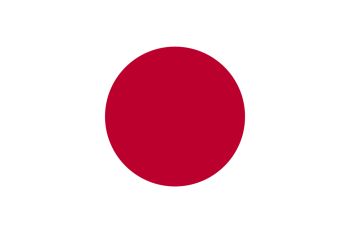Empire of Japan: Difference between revisions
m (Hyperlinks) |
mNo edit summary |
||
| (15 intermediate revisions by 4 users not shown) | |||
| Line 1: | Line 1: | ||
{{Nation|image=[[File:JapanFlag | {{Nation|image=[[File:JapanFlag.jpg|center|350px]]|name=Empire of Japan | ||
大日本帝國 (Japanese) | |||
''Dai Nippon Teikoku'' or ''Dai Nihon Teikoku''|motto=|anthem=|legislature=|independence=*Accession of Emperor Jimmu | |||
* | 11 February 660 BCE | ||
*Meiji Constitution: | |||
* | November 29, 1890|languages=*Japanese (de facto) | ||
*Korean | *Korean | ||
*Chinese|currency= | *Chinese|currency=|government=|independence-title=Formation}} | ||
Japan, also known as the Empire | |||
The '''Empire of Japan''', also known as the '''Japanese Empire''', or '''Japan''' is a [[Legacy Nation]] situated predominantly in the [[Great Orinoco]]. It is a superpower noted as the historic leader of the [[Co-Prosperity Sphere]], has been granted observer status in the [[Axis Powers]], and is a [[League of Nations Security Council|Security Council Member]] of the modern [[League of Nations]]. | |||
= History = | = History = | ||
=== Pre-First Scinfaxi War === | |||
The first known habitation of the Japanese archipelago on Earth dates to the Upper Paleolithic, with the beginning Japanese Paleolithic dating to c. 36,000 BC. Between the fourth and sixth centuries, its kingdoms were united under an emperor in Nara, and later Heian-kyō. From the 12th century, actual power was held by military dictators (shōgun) and feudal lords (daimyō), and enforced by warrior nobility (samurai). After rule by the Kamakura and Ashikaga shogunates and a century of warring states, Japan was unified in 1600 by the Tokugawa Shogunate, which implemented an isolationist foreign policy. In 1853, a [[United States of America|United States]] fleet forced Japan to open trade to the West, which led to the end of the shogunate and the restoration of imperial power in 1868. In the Meiji period, the Empire of Japan pursued rapid industrialization and modernization, as well as militarism and overseas colonization - emerging as a great power following the First Sino-Japanese War, the Boxer Rebellion, the Russo-Japanese War, and the Great War. | |||
Latest revision as of 17:40, 14 April 2025
The Empire of Japan, also known as the Japanese Empire, or Japan is a Legacy Nation situated predominantly in the Great Orinoco. It is a superpower noted as the historic leader of the Co-Prosperity Sphere, has been granted observer status in the Axis Powers, and is a Security Council Member of the modern League of Nations.
History
Pre-First Scinfaxi War
The first known habitation of the Japanese archipelago on Earth dates to the Upper Paleolithic, with the beginning Japanese Paleolithic dating to c. 36,000 BC. Between the fourth and sixth centuries, its kingdoms were united under an emperor in Nara, and later Heian-kyō. From the 12th century, actual power was held by military dictators (shōgun) and feudal lords (daimyō), and enforced by warrior nobility (samurai). After rule by the Kamakura and Ashikaga shogunates and a century of warring states, Japan was unified in 1600 by the Tokugawa Shogunate, which implemented an isolationist foreign policy. In 1853, a United States fleet forced Japan to open trade to the West, which led to the end of the shogunate and the restoration of imperial power in 1868. In the Meiji period, the Empire of Japan pursued rapid industrialization and modernization, as well as militarism and overseas colonization - emerging as a great power following the First Sino-Japanese War, the Boxer Rebellion, the Russo-Japanese War, and the Great War.
